A new future is being prepared for Brescia’s Roman Theater. On Tuesday, April 8, in the Auditorium of the Santa Giulia Museum, the preliminary restoration and re-functionalization project signed by architect David Chipperfield, commissioned by Fondazione Brescia Musei, in synergy with the Municipality of Brescia, the Chamber of Commerce and the Lombardy Region, was publicly presented.
The intervention promises to restore life and centrality to one of the symbolic places of the Roman era in the city, recognized as part of the UNESCO serial site, but so far used discontinuously. The project, still at a preliminary stage, envisages a complete functional redevelopment of the complex, maintaining its archaeological and historical identity but opening it to the future, with a planned capacity of 1,000 spectators for summer events, and a new accessibility in a contemporary key.
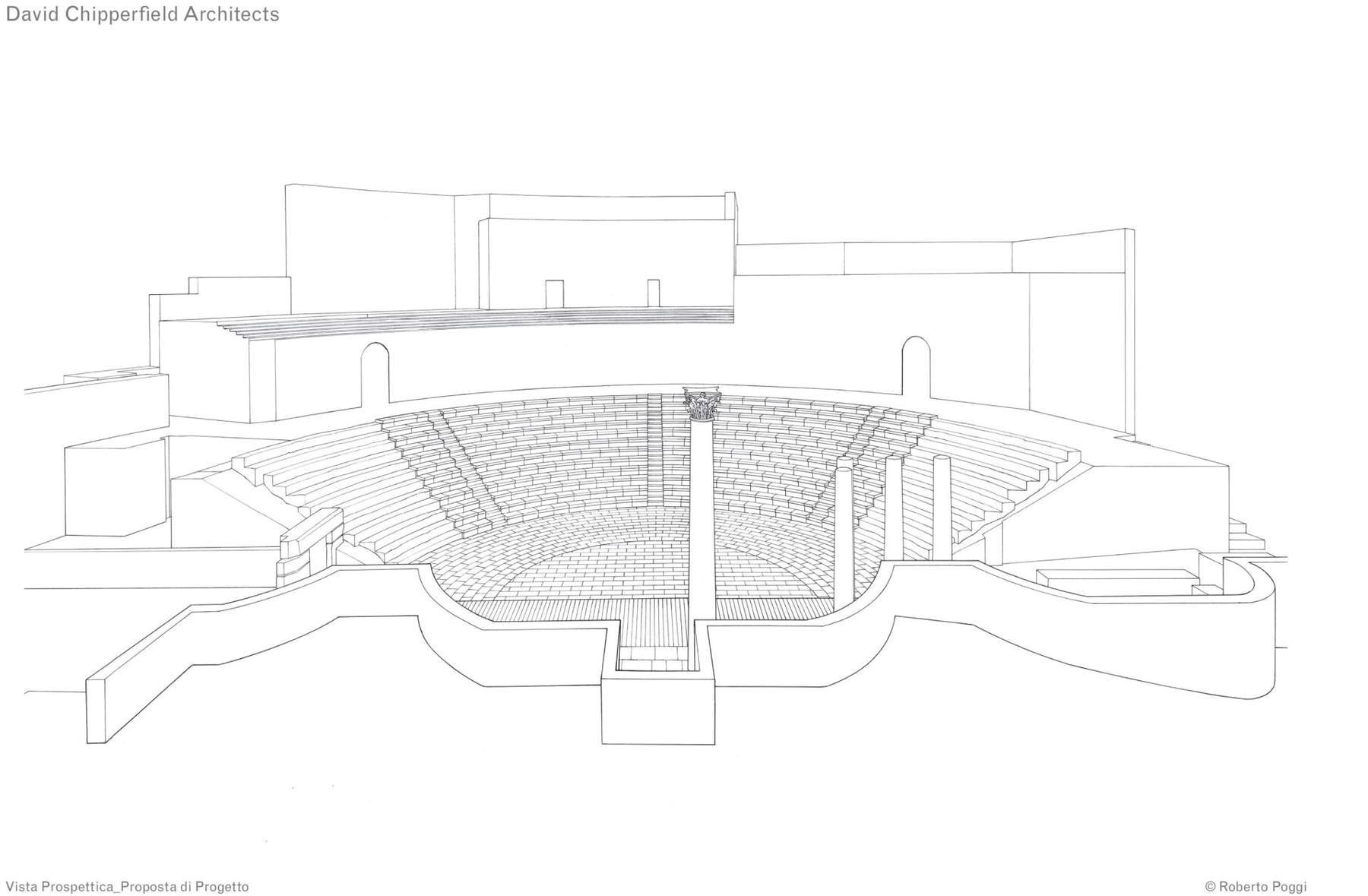
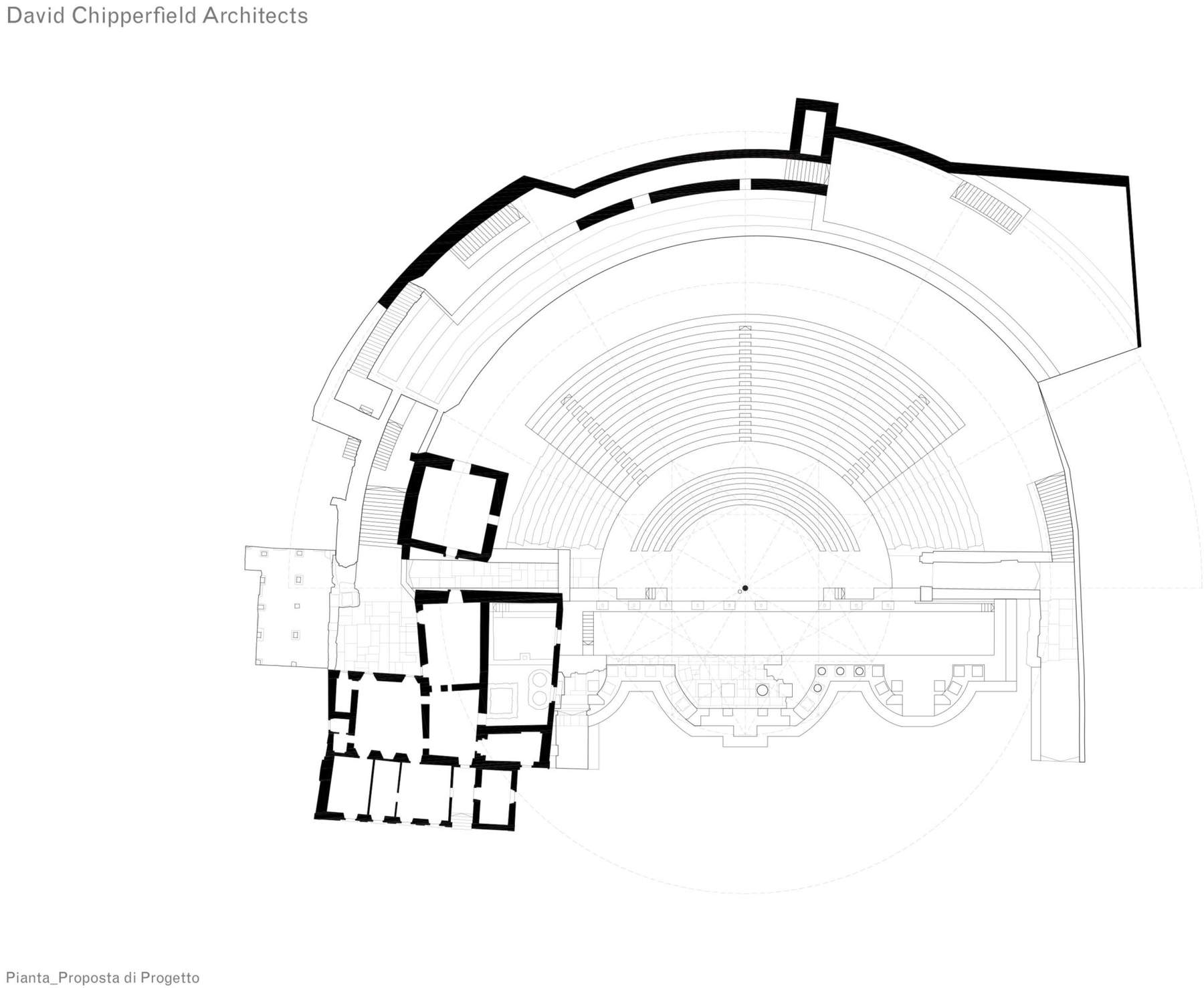
Chipperfield’s proposal stems from a thorough historical and documentary analysis, supplemented by very high-precision laser scanner surveys. The theater is rethought in its triple dimension: as an archaeological site, as an architectural space, and as a scenic venue for cultural and performing events. The re-functionalization will not be invasive, but calibrated to enhance the existing parts, making them usable without distorting them. The focus of the intervention concerns the recovery of the cavea, pulpit and vomitoria, as well as the creation of inclusive paths that are also accessible to people with disabilities. A central role will also be played by Palazzo Maggi Gambara, a medieval building adjacent to the theater, which will be transformed into the new access to the archaeological site. Its ground floor spaces will be reorganized to welcome visitors and to offer information and services related to the enjoyment of the area. Finally, the perimeter fence will also be reorganized to improve integration between the site and the urban fabric.
The restoration is part of a cultural strategy that has been underway for some time, with the aim of returning Brescia to a leading role in the Italian archaeological and cultural scene. The shared vision is that of a construction site that does not close, but opens to the city, transforming itself into a space for education, discovery and participation. Fundamental will be the role of the Soprintendenza Archeologia, Belle Arti e Paesaggio, which will conduct new archaeological excavations contextual to the work. The results will be integrated into the ongoing project, in a logic of transparent and dialogic work in progress, in which the public will be able to observe and understand the stages of progress.
The project, also supported by the Brescia Chamber of Commerce, looks at the model of a city in which cultural heritage does not remain separate, but dialogues with daily life. A vision well summarized by the words of Salvatore Settis, recalled during the presentation “archaeology in the city means archaeology for the city, not against the city, an archaeology that functions within the city, enriching its cultural coordinates, making it more interesting and pleasant to live in for its own citizens.” And precisely this will be the meaning of the intervention: to return the Theater to its citizens, not only as a historical asset, but as a living, active and generative space. The time horizon is already set: excavations and major redevelopment works should be completed by 2028, with the goal of reopening the Theater to a new season of public life. This is a strategic step for the cultural and touristic revitalization of the city, which aims to firmly place itself among the most dynamic Italian destinations on the front of enhanced and experienced archaeological heritage.
Chaired by Francesca Bazoli and directed by Stefano Karadjov, Fondazione Brescia Musei is a public-private partnership entity. It brings together some of the city’s main cultural institutions: the Archaeological Park of Brixia - Roman Brescia, the Museum of Santa Giulia, the Tosio Martinengo Art Gallery, the Luigi Marzoli Weapons Museum, the Museo del Risorgimento Leonessa d’Italia, the Castle of Brescia Falco d’Italia and the Nuovo Eden Cinema. All of these spaces, which make up the identity of the Brescia Civic Museums, are also part of the Abbonamento Musei Association circuit.
“Our approach for this extraordinary site brings together history, archaeology and memory in dialogue with the present,” says Sir David Chipperfield. “By addressing the incompleteness of the remains of the Roman Theater, we have extended our task beyond conventional archaeology to allow for a continuity of purpose that brings us back to the historic function of the site as urban infrastructure. During the development of the proposal, we became interested in the process of finding a range of solutions through a careful study of what is left along with an awareness of what has been lost, and we sought to strike a balance between the two-not strictly a scientific process-with the goal of creating a new physical reality. By restoring the geometry of the hemicycle, for example, we give order to these ancient fragments and revive the Roman Theater’s sense of space rather than recreating what once existed. In this way, we try to reintegrate the past into the daily life of the city of Brescia, to live in continuity with it rather than alongside it.”
“Recovering the Roman theater is a goal I have always had and, as I had promised the people of Brescia, finally the process that will lead to the restoration, first, and the re-functionalization, then, has really started,” says Laura Castelletti, Mayor Municipality of Brescia. “Brescia is fortunate to possess an enormous archaeological heritage of great value, very few Italian cities have a site like ours outside the Roman area, a heritage that we have the duty to guard with intelligence and foresight. In this place, the ancient heart of the city, a museum and a theater coexist, in close dialogue with each other. Imagining the recovery of the theater means redesigning together a new urban concept of conviviality and community. Like all complex processes, it is necessary to initiate it in order to understand and discover how the perception and ability to accommodate and include this new public agora in the city’s museum complex will change. We look forward to it.”
“April 8, 2025 is an emblematic date in the history of Fondazione Brescia Musei,” says Francesca Bazoli, President of Fondazione Brescia Musei. “A first three years of intense work, developed by the Brescia cultural institution together with the Municipality of Brescia - in logical and chronological continuity with the equally emblematic program for the enhancement of the Winged Victory, which resulted in its musealization in the Capitolium - comes to full maturity today, a work dedicated to the idea that the extraordinary urban space represented by the Roman Theater of Brescia could find a concrete, new vocation to be placed side by side with the cultural and archaeological one. I am grateful to the valuable collaborations that allowed us to acquire the momentum that is leading us today to present the visionary project of one of the greatest contemporary architects, Sir David Chipperfield, in my beloved city. A project capable of admirably harmonizing the instances of archaeological protection with those of valorization in a contemporary key by returning the theater to its ancient and original function. So many people helped, but scientifically we are especially indebted to two dear friends Pierre-Alain Croset and Alberto Ferlenga, for their tireless support in the study for the recovery of the site. And together with them, Professors Massimo Osanna and Guido Beltramini, esteemed members of our Scientific Committee, who have been accompanying us in this adventure since summer 2021. Today we are celebrating a civic milestone, emblematic of the restitution of the city’s founding heritage initiated by the City Council 50 years ago, and putting in place the basics for a new infrastructure that in turn will become a cultural asset itself, enabling the citizens of Brescia and the many, increasingly numerous guests of our beautiful city to get back in touch with their culture and, through the theater, identify with the unique system it represents, from the UNESCO Corridor to the entire Brescian museum system.”
“On this day,” says Stefano Karadjov, Director of Fondazione Brescia Musei, “we not only announce the handover, to Fondazione Brescia Musei and to the city, of a great, visionary project for the future of Brescia’s Roman Theater, but we also document the many elective affinities that in recent years have generated the present moment. First of all, with the Brescia Chamber of Commerce, to which we are profoundly grateful not only for the economic support, in the context of the enhancement of the territory, from which the project has benefited; but also for the cultural affinity manifested in October 2023 with CCIAA and Futura Expo in the organization of the National Conference dedicated to sustainability and cultural heritage, in which we outlined a ”Brescia charter,“ starting with the Roman theater. And then the Municipality of Brescia, with which the total sharing of intentions has already allowed us, last year, to activate a first phase of works for the accessibility of the site and the restoration of Palazzo Maggi Gambara, thanks to the essential collaboration of the Fondazione di Comunità Bresciana and, consequently, Fondazione Cariplo. My great satisfaction also comes from the knowledge that today’s project comes after a gradual maturation, fueled by successes, such as the National Conference dedicated to the future of Brescia’s Roman Theater in April 2022, and also by frustrations, such as the recognition of the project’s quality of infrastructure and physical and sensory accessibility-in the ranking list of the PNRR call for accessibility 2022-but frozen by the lack of allocation, due to the inability to find sufficient funds. As of tomorrow, April 9, 2025, a new phase begins, which I hope will be marked by the closest collaboration with the Superintendence of Fine Arts Architecture and Landscape, with whom the first positive first positive confrontations have already taken place, and with the MiC’s General Directorate for Protection, in order to make the project of the new Roman Theater of Brescia a true emblematic case of restitution and valorization, as in the recent past have been the Teatro Grande of Pompeii or that of Ostia Antica, or as hopefully in the future will be other sites currently undergoing transformation, such as the Roman Theater of Trieste, in which we as Fondazione Brescia Musei are also collaborating. My heartfelt thanks for the three years of work that are crowned today by the presentation of the ”Chipperfield project“ to all the collaborators of Brescia Musei: those present and those in the past, such as the archaeologist Francesca Morandini, now working for the Municipality of Verona, an entity with which I hope that in the future we will activate, precisely in the field of ancient theater performance, a close collaboration.”
“The Brescia Chamber of Commerce has decided to support the planning stages of the Roman Theater’s recovery in the conviction that it can become an additional and effective attractor, adding to the treasures that the city guards and reveals to its visitors,” says Massimo Ziletti, secretary general of the Brescia Chamber of Commerce.
“The visual identity project presented today stands between the past and the future, between the future and the present,” says Paolo Tassinari, Studio TassinariVetta. “The fragments of letters that make up the name TEATRO ROMANO BRESCIA like archaeological finds are collected and ordered, waiting to be reassembled to express the many souls of the Theater: the monument, the show and the stage, the cultural project. A place that takes voice in typographic expressiveness through a visual language rooted in history but current, open, accessible, in a project that aims to ensure visual coherence to communication and, ultimately, to strengthen the sense of belonging of the audience to the theater and of the theater to the city.”
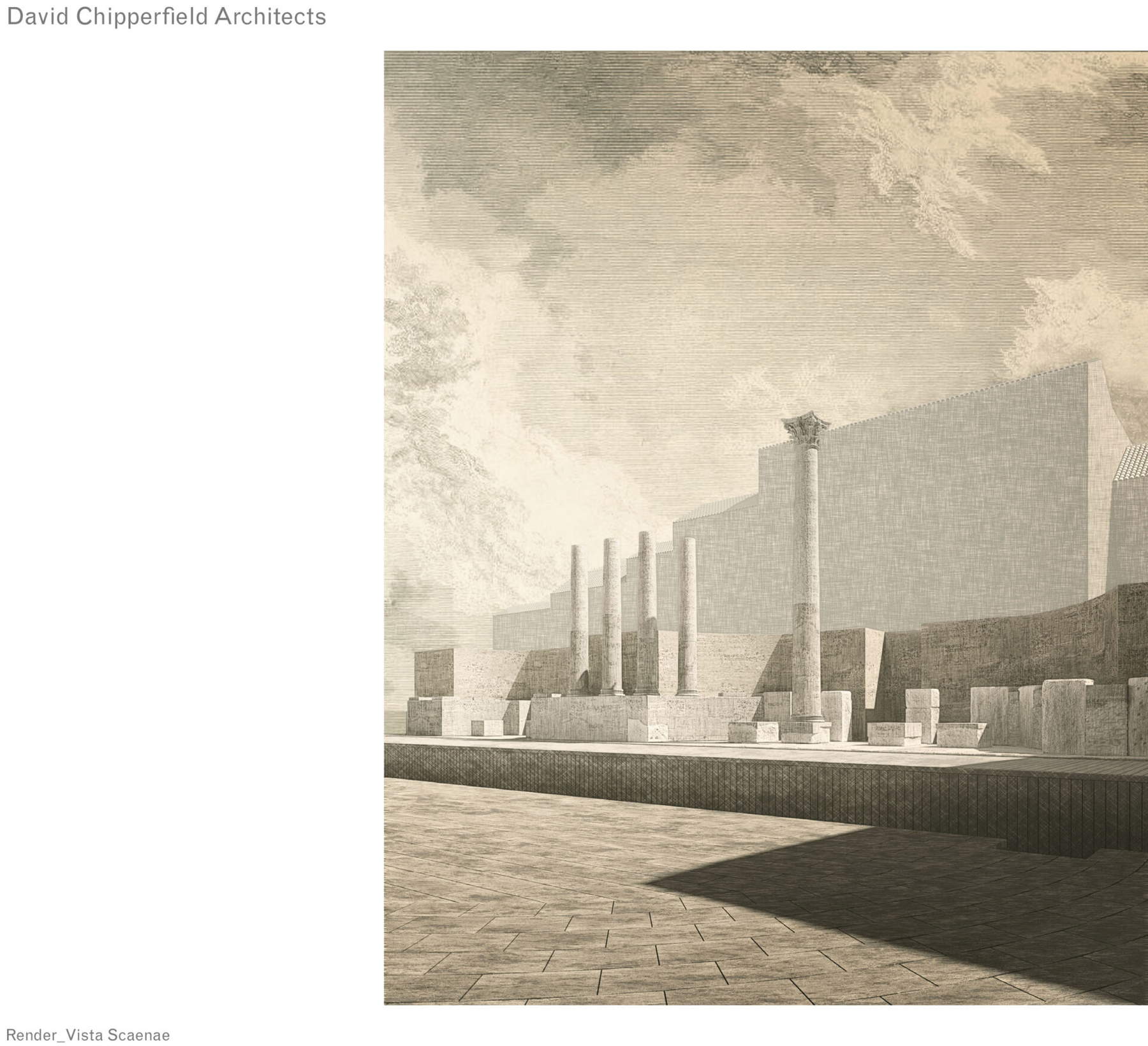
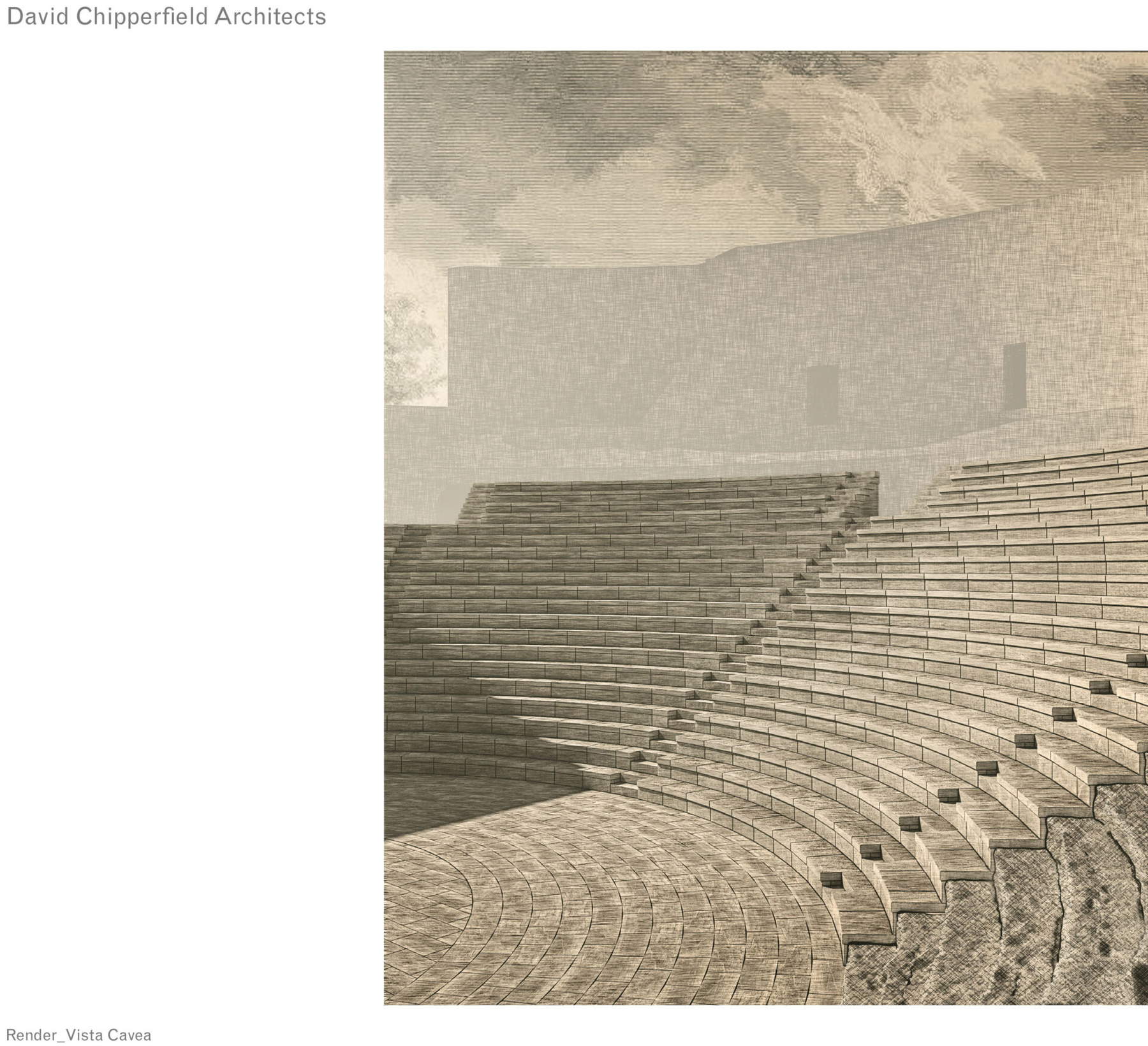
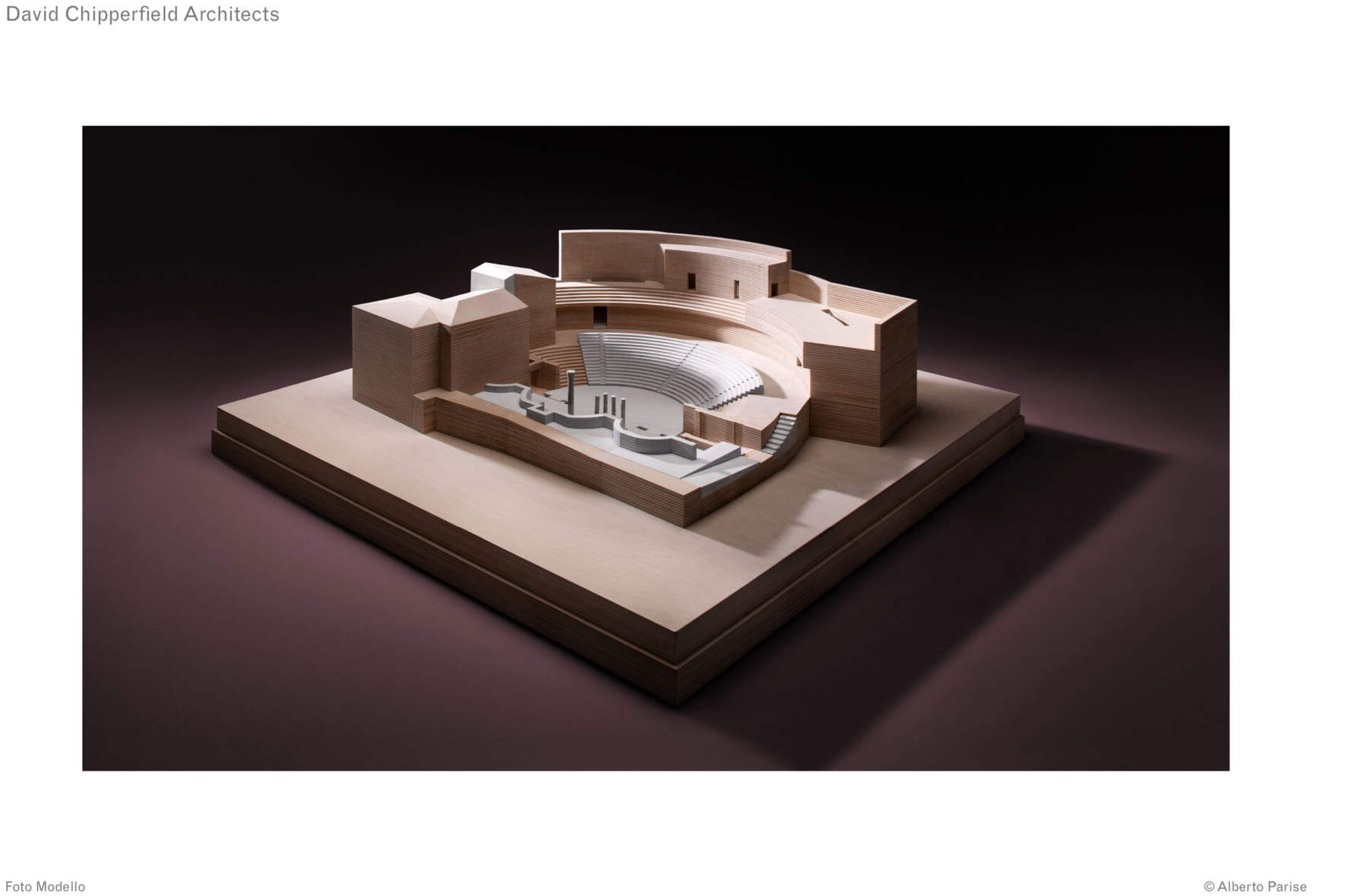
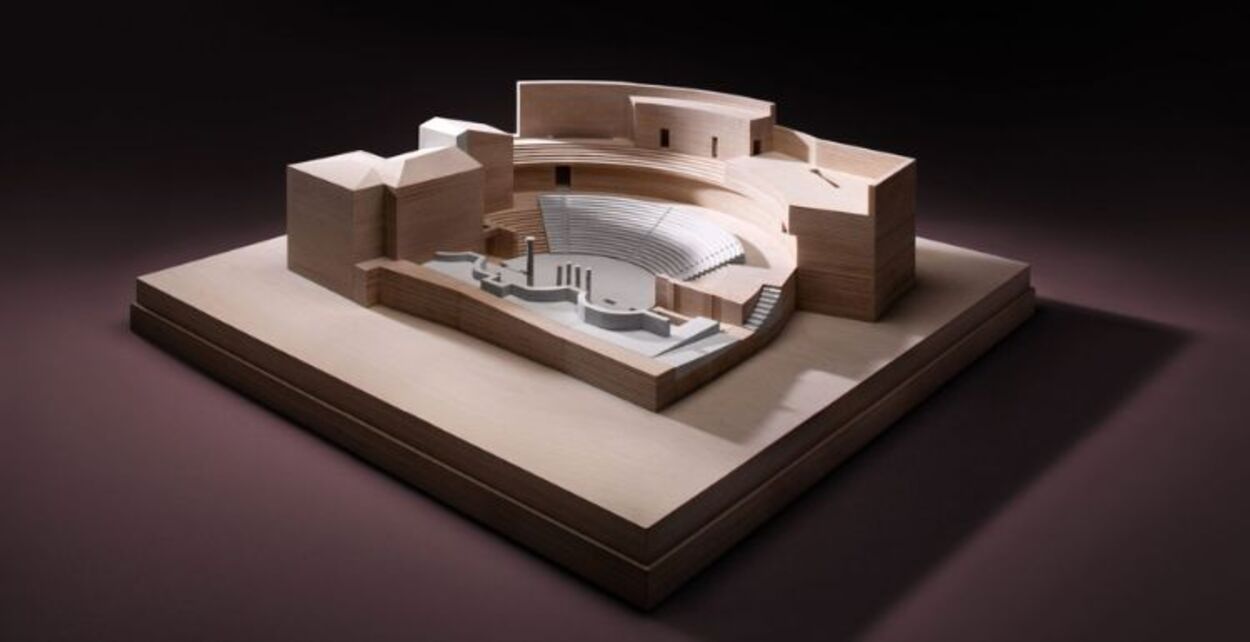 |
| Restoration and new life for Brescia's Roman Theater: David Chipperfield's project |
Warning: the translation into English of the original Italian article was created using automatic tools. We undertake to review all articles, but we do not guarantee the total absence of inaccuracies in the translation due to the program. You can find the original by clicking on the ITA button. If you find any mistake,please contact us.